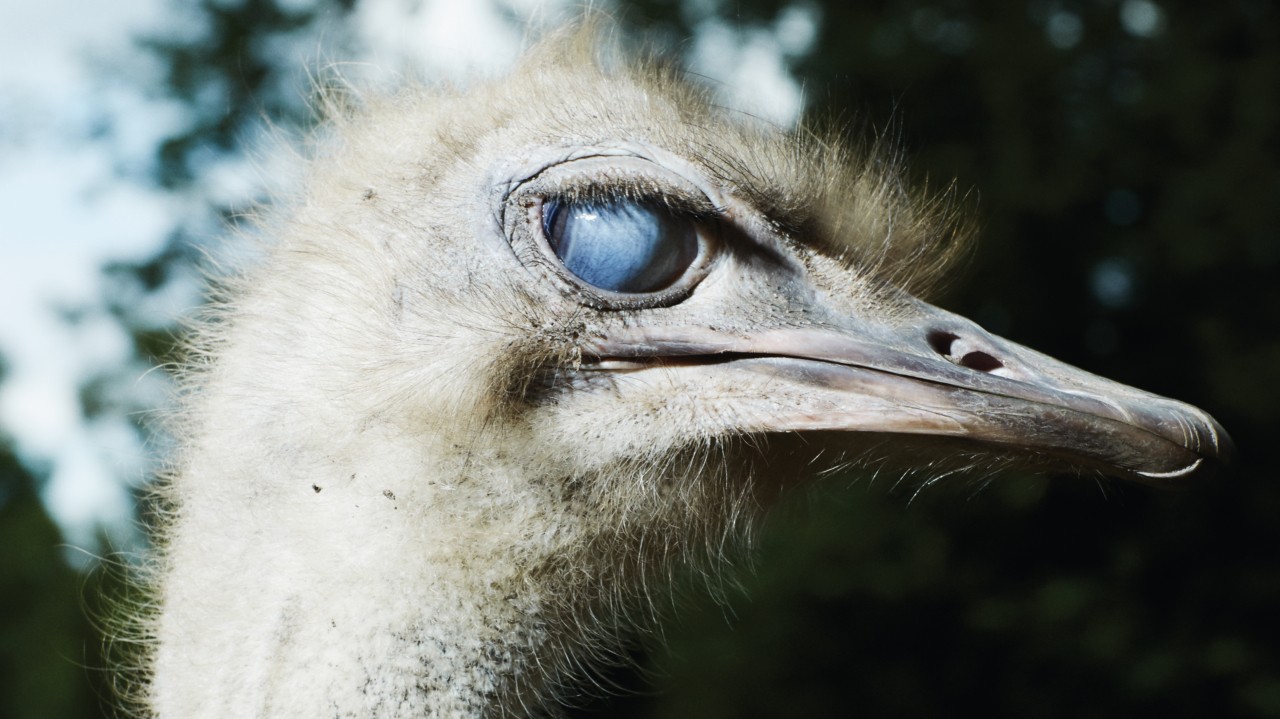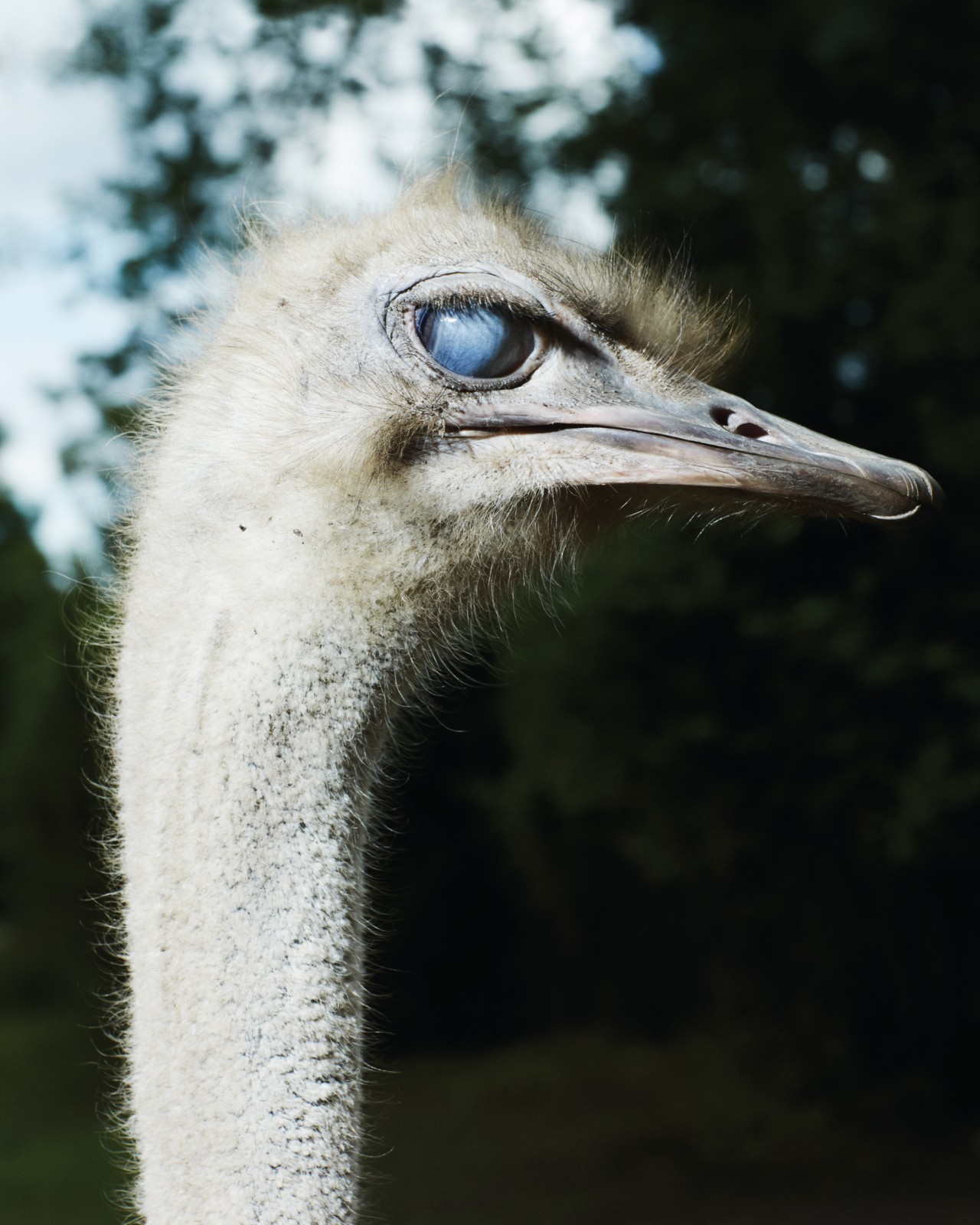

Photograph by Charlie Engman / Trunk Archive
words by willow defebaugh
“Any fool can turn a blind eye but who knows what the ostrich sees in the sand.”
—Samuel Beckett
While traveling abroad recently, upon hearing that I was American, I was frequently asked how I am handling this political moment. My response was often that I’m either doing well or I’m dissociating. While said in jest, the truth is not far off. I’m feeling more energized than ever about the work we are doing at Atmos. Yes, I’m alarmed by my surroundings, but I’m letting it motivate me at full-speed, rather than consume me. Enter this week’s guest teacher: the ostrich.
Ostriches are marvelous creatures that hold many record titles. They are the tallest and heaviest living birds, with adult males towering at 9 feet tall—nearly half of that height being their necks—and reaching around 300 pounds. They also have the largest eyes of any land animal, and their eggs are the biggest of any in the world. They live in herds and practice communal nesting, where all the females lay their eggs together and the alpha male and female take turns incubating them. They understand the value of solidarity.
That spirit of collaboration extends beyond just their own species. The signature black and white plumage of male Struthio camelus makes them fitting companions for another relative that roams the savannas: zebras. An example of mutually beneficial symbiosis, ostriches and zebras are known to herd together to help supplement one another’s senses. With their large eyes, ostriches have a keen sight for spotting danger, but they have a terrible sense of smell. Zebras, meanwhile, have the reverse. Stronger together, they can warn the collective of incoming predators.
Like other ratites including emus and kiwis, ostriches are flightless birds. How and why they lost the ability to fly has been a debate among scientists. One theory is that, where their ancestors settled, there weren’t land predators that they had to worry about. Since flight requires significant energy, their ancestors developed an advantage in no longer relying on it—and over time, passed on smaller wings and muscles that led to flightlessness. Something lost, something gained.
And much was gained—namely, speed. Ostriches are the fastest bipedal land animal, capable of sprinting at 43 miles per hour, and sustaining a running pace at 31 miles per hour. Far from useless, their small wings act as rudders that allow them to make sharp turns while running. The powerful legs they honed across their evolution afford them the ability to leap in single strides of up to 16 feet. And they are weapons in their own right; an ostrich kick can kill a human and even a lion, with their unique two-toed feet possessing sharp claws.
Warriors when they need to be, the idea that ostriches bury their heads in the sand to ignore threats is a popularly false one. The origins of this myth might be that they dig nests in the ground and turn their eggs with their heads. It could also be the fact that they have been observed laying low and pressing their necks to the ground in order to avoid detection from predators when fleeing to safety is not an option—a far cry from cowardice or ignorance.
This is not a moment for us to bury our heads in the sand either, though it may require keeping our heads close to the earth. We must band together and maintain focus with sharp eyes, looking out not only for our own communities but those we graze with. And when it feels like our wings might be clipped, our flightless kin remind us that there are other means of movement—that we can still act swiftly, with both power and grace. In fact, that might just be our greatest strength.
Flightless Bird, American Mouth: Lessons From Ostriches